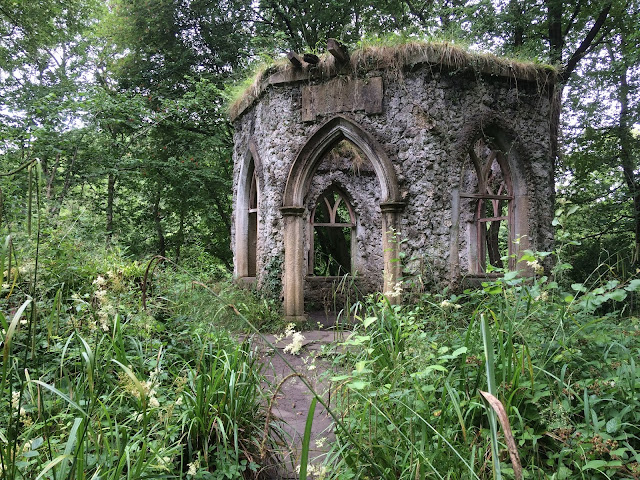One of my first trips was braving an unpromising rainy day to head up to Hackfall Wood. What a site, I thought it would fill half a day until the weather cleared but I ended up filling a day pottering around the various paths and I still left feeling there was more to see. The plants were exceptional, helped by proximity to a boulder strewn section of river dripping in vegetation, with each boulder with its own mini hanging garden. However, the experience was added to by the various 18th century gothic follies hidden through the wood.
Giant Bellflower (Campanula latifolia)
Harebell (Campanula rotundifolia subsp. rotundifolia) on riverside boulder
The trip was spur of the moment, so I quite forgot this site is famous for its thriving population of Wood Fescue (Festuca altissima). So when I stumbled over my first patch, there was much head scratching until it clicked into place. A new species for me. Its here in its hundreds dripping from the rock outcrops and slopes below.
Plenty more widespread species added to the interest.
Bifid Hemp-nettle (Galeopsis bifida)
Goldenrod (Solidago virgaurea subsp. virgaurea)
Common Cow-wheat (Melampyrum pratense subsp. pratense var. pratense)
The final highlight of a great day was the biggest stand of Great Horsetail (Equisetum telmateia) I have ever seen, easily 100 x 10m in area. This is an uncommon species in VC64.













